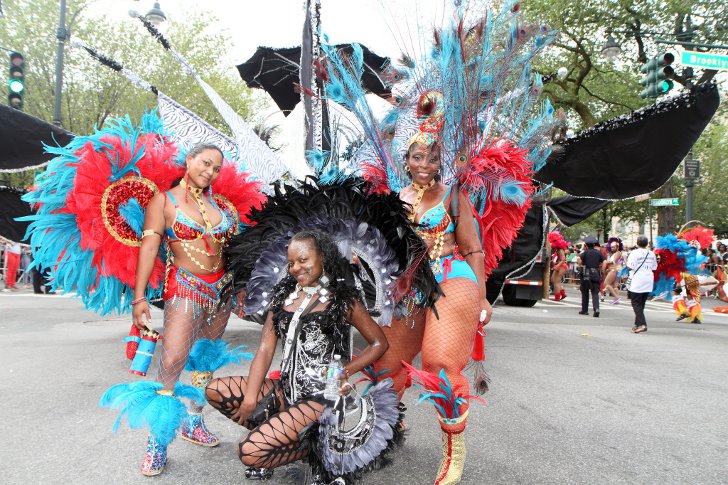The history of the West Indian Day Parade began in 1920s, when Jessie Wardell and a group of her West Indian friends started Carnival celebrations in Harlem. They organized a series of pre-Lenten costume parties in large enclosed spaces due to the cold weather in February. However, because of the very nature of Caribbean Carnival as a large outdoor procession the idea didn’t work out.
The first Carnival street parade in New York City was held in September 1947 It was organized by the Trinidad Carnival Pageant Committee. The parade marched along Seventh Avenue in Harlem and was followed by a party at the Golden Gate Ballroom.
The parade was held in Harlem for almost two decades until its permit was revoked in 1964. Luckily, the Carnival tradition continued thanks to Rufus Goring, a Trinidadian who brought the parade to Brooklyn. In 1969, Goring passed the reigns to Carlos Lezama, who eventually became the president of the West Indian-American Day Carnival Association that still runs the parade. Lezama retired in 2011 and was succeeded by his daughter, Yolanda Lezama-Clark. Since 2012, Thomas Bailey has served as the president.
The West Indian-American Day Carnival Association strives to celebrate, promote and develop Caribbean culture, traditions, history and arts through a series of year-round events which culminate with a week-long celebration and a Labor Day Carnival Parade. Events that precede the parade include concerts, various workshops for kids, fairs, competitions, and a Junior Carnival Parade.
The West Indian Day Parade is held every year on Labor Day (the first Monday in September). It features thousands of participants in vibrant costumes who represent Caribbean islands, including Trinidad and Tobago, Dominica, Barbados, Haiti, Jamaica, Saint Lucia, Grenada and Saint Vincent, as well as mainland Caribbean countries, such as Belize, Suriname and Guyana. They are accompanied by musicians playing calipso and soca music.
The West Indian Day Parade has been subject to criticism due to lack of security. A string of shootings and stabbings, including fatal ones, has occurred during and following the event in recent years.
In 2020, the event was held online due to the coronavirus pandemic.

Photo: dreadjams




